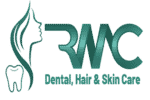PRP Treatment – Benefits, Side Effects, & Process
The popularity of platelet-rich plasma (PRP) has led some to believe that we have finally discovered the secret of youthful skin. A lot has been published during the past few years about PRP, a substance that may be useful in the treatment of injuries.
Further, platelet-rich plasma injections are becoming more and more popular for treating a range of conditions, including hair loss and sports injuries. A patient’s own blood cells are used in the procedure to hasten the healing of a particular area.
Learn more about this remarkable treatment by reading this blog.
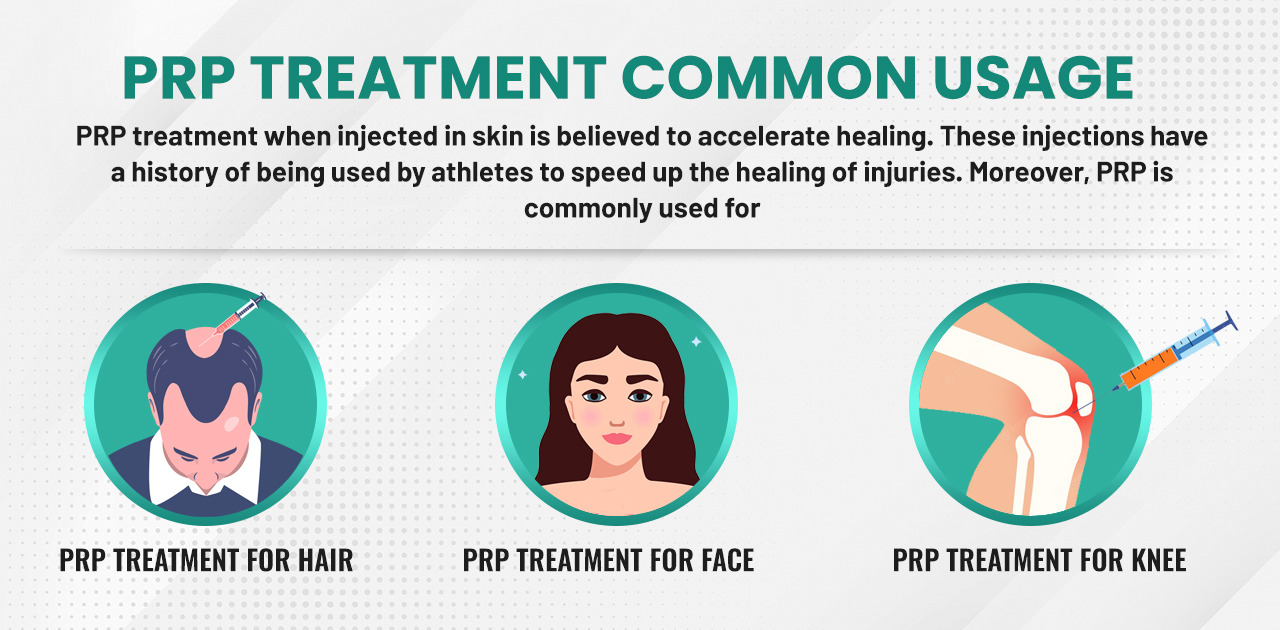
What is PRP Treatment?
When injected, PRP is a material that is believed to accelerate healing. By concentrating and separating blood plasma, researchers have created PRP. These injections have a history of being used by athletes to speed up the healing of injuries.
The theory is that by injecting PRP into injured areas, your body will be stimulated to produce new, healthy cells and aid in healing.
Researchers believe that the body’s tissues may recover more quickly because the tissue growth factors are concentrated more in the prepared growth injections.
Clinicians in PRP clinic in Blue Area draw a blood sample from the patient and place it into a centrifuge, rapidly spinning the sample to concentrate the platelets within the plasma and separate the other blood components. This process produces platelet-rich plasma.
Moreover, PRP is commonly used for hair, face, and knee injuries. Let’s discuss them in detail.
-
PRP Treatment for Hair
Some medical professionals believe that PRP injections stimulate and maintain natural hair growth by boosting blood flow to the hair follicle and increasing the thickening of the hair shaft.
-
PRP Treatment for Face
PRP smooth’s the skin’s texture, reduces the visibility of small lines and wrinkles around the mouth and eyes, and fills in hollow areas like the cheeks, temples, and tears through grooves. PRP can also aid in the fading of surgical and acne scars.
-
PRP Treatment for Knee
Studies have revealed that various forms of platelet-rich plasma therapy for knees may successfully treat low- to moderate-grade knee osteoarthritis. In addition, according to certain research, platelet-rich plasma injections dramatically lessened pain compared to a placebo.
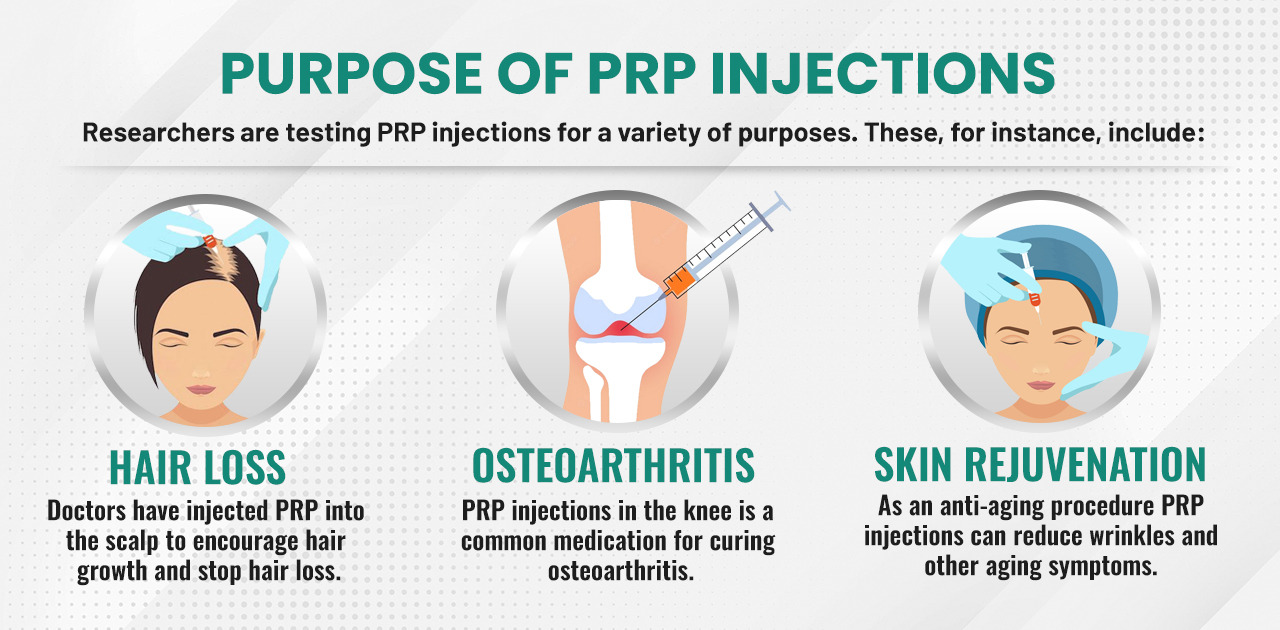
What is the Purpose of PRP Injections?
Researchers are testing PRP injections for a variety of purposes. These, for instance, include:
-
Severe Injuries
Doctors have used PRP injections to treat severe sports injuries like sprained knees and pulled hamstrings.
-
Hair Loss
Doctors have injected PRP into the scalp to encourage hair growth and stop hair loss. PRP injections successfully treat androgenic alopecia, often known as male pattern baldness.
-
Osteoarthritis
People with osteoarthritis may benefit from PRP injections in the knee. According to a 2015 study by a trusted source, PRP injections were superior to hyaluronic acid injections, a common medication for curing osteoarthritis.
-
Skin Rejuvenation
PRP injections are occasionally used as an anti-aging procedure. They can reduce wrinkles and other aging symptoms.
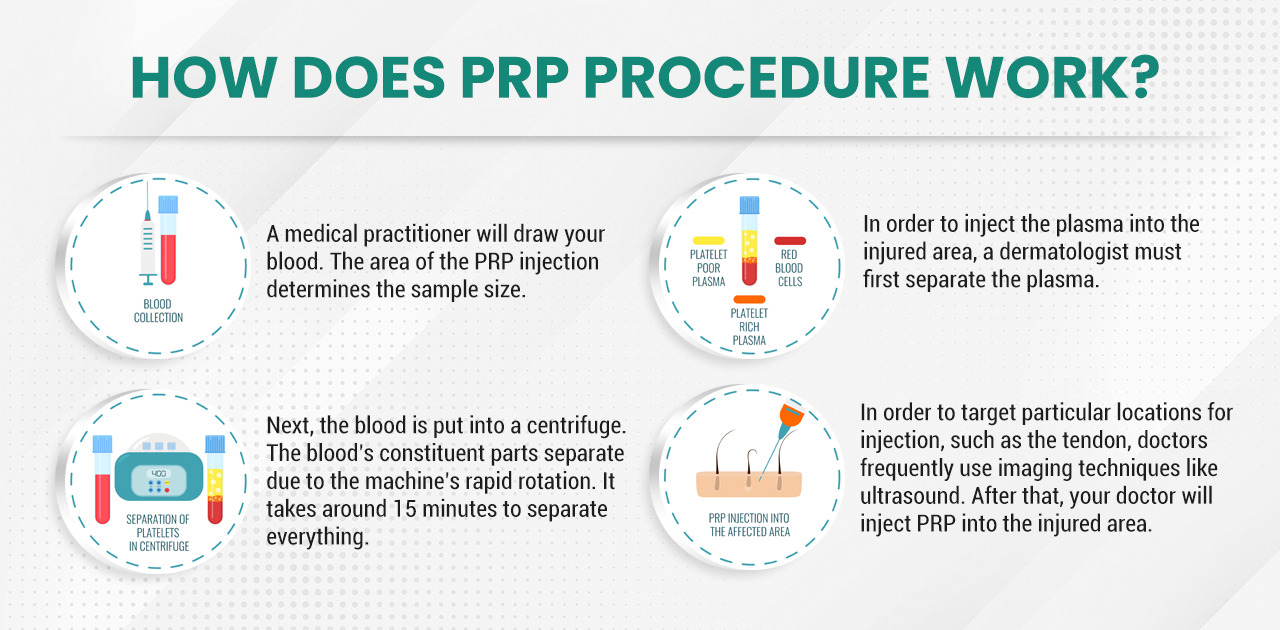
How Does PRP Work?
A regular PRP injection procedure will look like this:
- A medical practitioner will draw your blood. The area of the PRP injection determines the sample size.
- Next, the blood is put into a centrifuge. The blood’s constituent parts separate due to the machine’s rapid rotation. It takes around 15 minutes to separate everything.
- In order to inject the plasma into the injured area, a dermatologist must first separate the plasma.
- In order to target particular locations for injection, such as the tendon, doctors frequently use imaging techniques like ultrasound. After that, your doctor will inject PRP into the injured area.
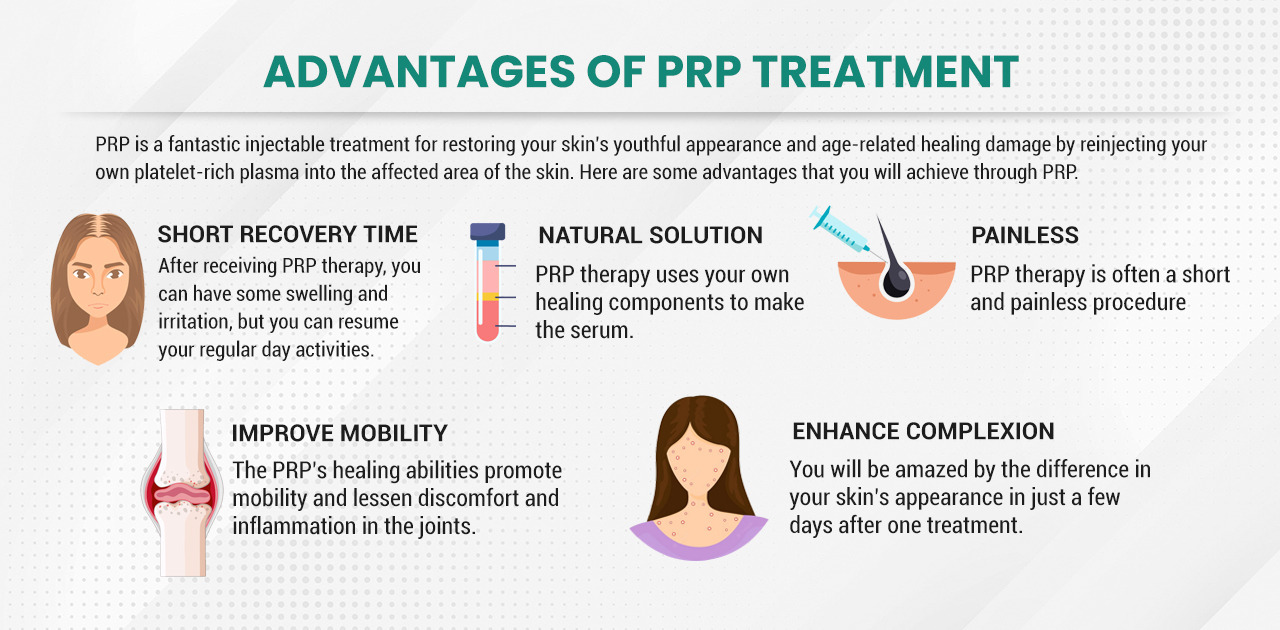
What are the Advantages of PRP?
PRP is a fantastic injectable treatment for restoring your skin’s youthful appearance and age-related healing damage.
In order to stimulate the body’s natural healing process, the treatment entails reinjecting your own platelet-rich plasma into the affected area of the skin.
Here are some advantages that you will achieve through PRP.
-
Short Recovery Time
After receiving PRP therapy, you can have some swelling and irritation, but you can resume your regular day. Dermatologists offer exercise and pain-relief recommendations after your PRP therapy to reduce discomfort and promote healing.
-
Painless
PRP therapy is often a short and painless procedure, while the length of time varies depending on your particular health needs.
The medical expert quickly injects the healing cells directly into the injured or damaged tissue after drawing your blood and preparing your PRP for the injection. This process does not take a lot of time. Before your PRP injection, they apply a topical anesthetic if necessary to reduce discomfort.
-
Natural Solution
PRP therapy uses your body’s own healing components to make the serum, which is one of its key advantages.
Blood from your arm is drawn for a sample of PRP, which is then spun in a centrifuge to separate the platelets from the other components of your blood.
-
Improve Mobility
Joint pain is very prevalent and can be brought on by a variety of conditions, such as arthritis, overuse, injury, or just general aging wear-and-tear. The PRP’s healing abilities promote mobility and lessen discomfort and inflammation in the joints.
Even though you could start to feel better around a week following your PRP therapy, the healing process takes time. Before you experience the maximum advantages, it could take up to six months.
-
Enhance Complexion
You can benefit from a PRP if you have stretch marks, hyperpigmentation, acne scars, surgical scars, trauma scars, scars from previous surgery, or any other type of poor skin tone or texture. You will be amazed by the mind-blowing difference in your skin’s appearance just a few short days after one treatment.
What Are The Potential PRP Side Effects?
PRP is autologous, which means it contains components derived entirely from your body. This lowers the possibility of an allergic reaction after injecting other drugs like cortisone or hyaluronic acid.
However, there are hazards associated with the injection itself, such as:
- Nerve injuries
- Tissue damage
- Infection
- Pain in the injection area
You should consult with your best PRP doctor in Islamabad regarding these potential risks as well as the measures being taken to reduce them.
Is PRP Safe?
This treatment is completely safe. You can have pain, bruising, and swelling following the procedure. These typically disappear in a few days.
The handling of your blood poses the greatest risks. Maintaining sterility of the blood drawn from your body is crucial. You might become infected if you don’t. Otherwise, you could develop an infection.
The facility should ensure that you receive an injection of your own blood by using the same procedure that transfusion centers do for your safety.
What is The Recovery Time for PRP Injections?
Your doctor might advise resting the affected area after receiving PRP injections. However, these suggestions are more related to the injury and less to the PRP injections. After PRP injections, the majority of patients can resume their normal daily activities.
You might not see a difference right away if you get PRP injections because they’re meant to encourage growth or healing. But after a few weeks or months, you might notice that the area is mending more quickly.
PRP therapy uses your body’s own natural healing abilities to speed up wound healing, reduce pain, and enhance health and function.
Contact us or book an appointment online right now and get benefits from this amazing PRP treatment in Islamabad.
